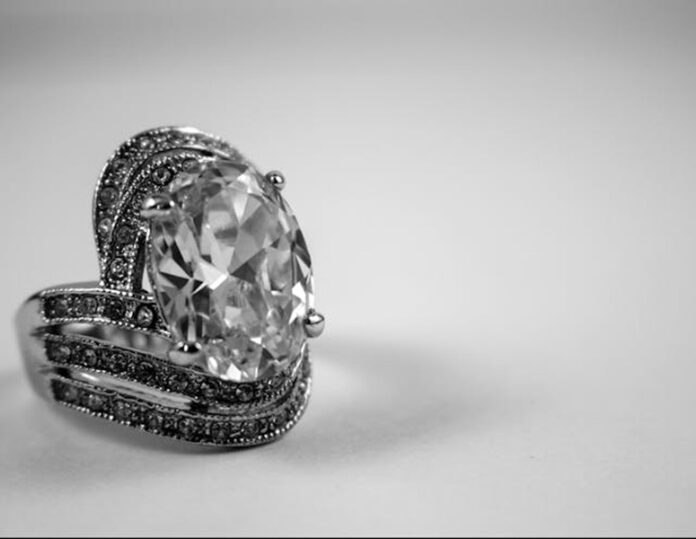Selling a diamond can take a few days to several weeks, depending on its quality, demand, and selling method. Certified diamonds with competitive pricing often sell faster through online platforms or reputable dealers.
Local jewelers or pawn shops may offer immediate payment, but usually at a lower price. For a faster, fair option, sell your diamonds to Diamond Banc.
Read more:
- Custom Fine Jewelry: Making Your Dream Wedding Band a Reality
- 8 Jewellery Pieces Every Fashionista Wardrobe Needs
How Fast Can Diamonds Sell?
The rate of selling a diamond ring varies based on several factors, such as the sale channel, characteristics of the diamond, and prevailing market demand. Different channels—local jewelry shops and online platforms—differ in speed, value provided, and convenience.
Same-Day Sales
For sellers looking for a sale on the same day, independent jewelers and local jewelry stores are the most probable buyers. These direct diamond buyers can settle purchases in hours, not days.
Though sellers may have to settle for lower offers because of the convenience premium. Submitting required documentation, including grading reports, can facilitate faster negotiations and get the sale done within a day.
Within Days
Online diamond buyers and a few local jewelers usually sell diamonds in a few days. Reliable online sites usually promise quick appraisals, even within one or two days once the diamond is received.
However, professional jewelry buyers might take some time to assess the item before extending an offer. Shipping and packaging pose risk and possible delay, but these routes provide a compromise between speed and cost.
Several Weeks
Consignment shops and some jewelry stores usually require a longer timeline, often several weeks. These methods tend to generate more money but involve appraisals and waiting for the right buyer.
Strong marketing, including professional photos and detailed descriptions, can accelerate interest. Sellers should be prepared for extended negotiations and inspections.
Months or Longer
Rare or exceptionally valuable diamonds attract specialized buyers such as private collectors or high-end clients.
Sales involving these diamonds may take several months due to the niche market and the careful planning required to maximize the sale price. Patience is essential when selling such illiquid assets.
Why Timelines Differ
The pace at which a diamond is sold is significantly affected by its type, size, and quality. Buyer demand and market trends change, rendering some diamonds more in demand than others.
Preparation, such as having grading reports in hand, can reduce the sales period. Certain selling methods naturally take longer because of appraisals, negotiations, or viewings in person.
Key Factors Impacting Speed
Several factors impact how quickly a diamond can be sold, including its physical characteristics, current market conditions, and the sales platform used. Understanding these elements helps sellers choose strategies for the fastest and most profitable sale.
Diamond’s Nature
The 4Cs—cut, clarity, color, and carat weight—are key to establishing a diamond’s market price. Well-cut, high-clarity diamonds with strong colors sell more quickly. Specialty stones, such as rare fancy color diamonds, might need auction houses or specialty buyers, which can delay the sale.
On the other hand, synthetic diamonds tend to sell more slowly because demand is lower. Damage or inclusions that can be seen drop resale prices strongly.
Market Pulse
Global economic factors influence diamond prices and demand. For example, a strong US dollar may reduce international buyer interest, while seasonal peaks, like wedding seasons, can speed up sales. Economic downturns often lower buyers’ price ceilings and extend selling times.
Seller Actions
Having credible documentation, such as GIA grading reports, generates trust among buyers. Spotless and appealing diamonds make more impressions. Offering prices competitively based on market analysis and employing effective marketing channels, such as social media, brings greater visibility and buyers.
Chosen Outlet
Pawn shops offer instant cash with the sale of used jewelry at a considerable value loss. Auction houses are ideal for rarer diamonds but may be time-consuming as opposed to neighborhood jewelry stores that deliver affordable prices.
Quick Diamond Sale Channels?
To quickly finish a diamond sale, the seller must opt for a credible diamond buyer as the selling medium. There is a need to pick an option that best matches major concerns like speed, value, and security, because each method of selling has its strengths and weaknesses.
Direct Buyers
Diamond dealers and independent jewelers offer the fastest transactions, sometimes within days. Offers tend to be lower due to resale profit margins.
Verifying the buyer’s reputation and presenting proper documentation improves negotiating power. This option suits sellers prioritizing speed over maximum value.
Pawn Shops
Offering immediate cash, pawn shops pay quickly but often at 30%-50% of retail value. This route is best for smaller diamonds where speed trumps getting full value. A well-presented diamond can improve offers.
Online Buyers
E-commerce platforms expand reach to global buyers, providing secure shipping, grading, and payment within 24 hours of offer acceptance. Online selling balances speed and competitive pricing, but sellers should verify platform reputations through reviews.
Local Jewelers
Selling locally offers a middle ground between speed and fair pricing. Independent jewelers can provide reasonable offers for high-quality stones, especially if sellers bring certifications and market knowledge. Building relationships may result in repeat business.
Auction Houses
Auctions cater to rare or high-value diamonds. The process is longer due to appraisals and bidding, but it can yield high returns if buyer interest is strong. Sellers should set realistic expectations with auction specialists.
Faster Diamond Sale Steps
To sell a diamond quickly, sellers should:
- Understand the diamond’s value through an independent appraisal.
- Gather all relevant documents like grading reports and purchase receipts.
- Present the diamond well by cleaning it and using high-quality photos.
- Set a realistic price based on comparable market data.
- Choose the right selling channel according to their priorities of speed, value, and security.
Know Worth
Learning the actual worth of a diamond starts with a third-party appraisal by a professional gemologist. This is the only method to get a correct estimate that considers the 4Cs—color, cut, clarity, and carat.
Simple online measures, like diamond price calculators, can provide immediate appraisals, but these are merely to be utilized as an auxiliary and not a substitute for professional assessments.
The sellers are recommended to learn and get a general idea of current market prices by looking up comparable diamonds on the internet. For instance, an excellent cut, colorless 1-carat round diamond might fetch a premium price, but similar diamonds usually sell at a significantly lower price.
Overpricing a diamond is the most frequent mistake, as diamonds usually resell for 20-60% of the original retail price. Unrealistic prices discourage buyers and make the selling process longer.
Collect Papers
Reports of grading by renowned labs, for instance, GIA or AGS, bring significant confidence to potential buyers. Other papers, like receipts for proof of purchase and past appraisals, also increase trust.
In the case of selling online, where authenticity is a common issue, proper paperwork can go a long way in dispelling fears of the buyers.
Emphasizing these credentials is particularly necessary when retailing to jewelers or on the web. A diamond with a GIA certificate will attract serious purchasers and justify a reasonable price bid.
Present Well
The beauty of a diamond contributes significantly to the interest of buyers. Cleaned professionally, diamonds have more brilliance and sparkle and are thus more desirable.
Quality photos in natural light can make online listings more noticeable. Having the diamond display on a neutral background allows for more emphasis on the stone itself.
Any unique characteristics—like a signature cut or intriguing history—must be highlighted. These unique attributes set the diamond apart and allow for higher asking prices.
Price Smartly
Pricing must be set by comparable market value, i.e., in local jewelry stores. Pricing a little lower than fair market value can result in faster offers, particularly in the diamond market.
Avoid emotional pricing based on sentiment, which keeps buyers away. Having a bottom-line price in advance keeps sellers from leaving money behind.
Make Your Diamond Sale Fast and Efficient with Smart Preparation
Selling a diamond in a hurry relies mostly on preparation and the right channel of sale. Familiarity with resale value, having the documentation, and opting for a reliable platform will be time-saving and effort-effective.
Sale speed also depends on the diamond’s quality, prevailing market demand, and the buyer type. Selling it at the jeweler’s shop, online marketplace, or auction house, each has its pros and cons.
Honesty and realism are important at every step. Most rapid sales involve a compromise between speed and the best possible price. By being prepared and educated, sellers can more effectively analyze their choices and move forward based on priority and timeline.
To make the sale efficient and problem-free, research and planning are key. By doing minimal preparation, sellers can set themselves up for success and weather the selling process more easily.

